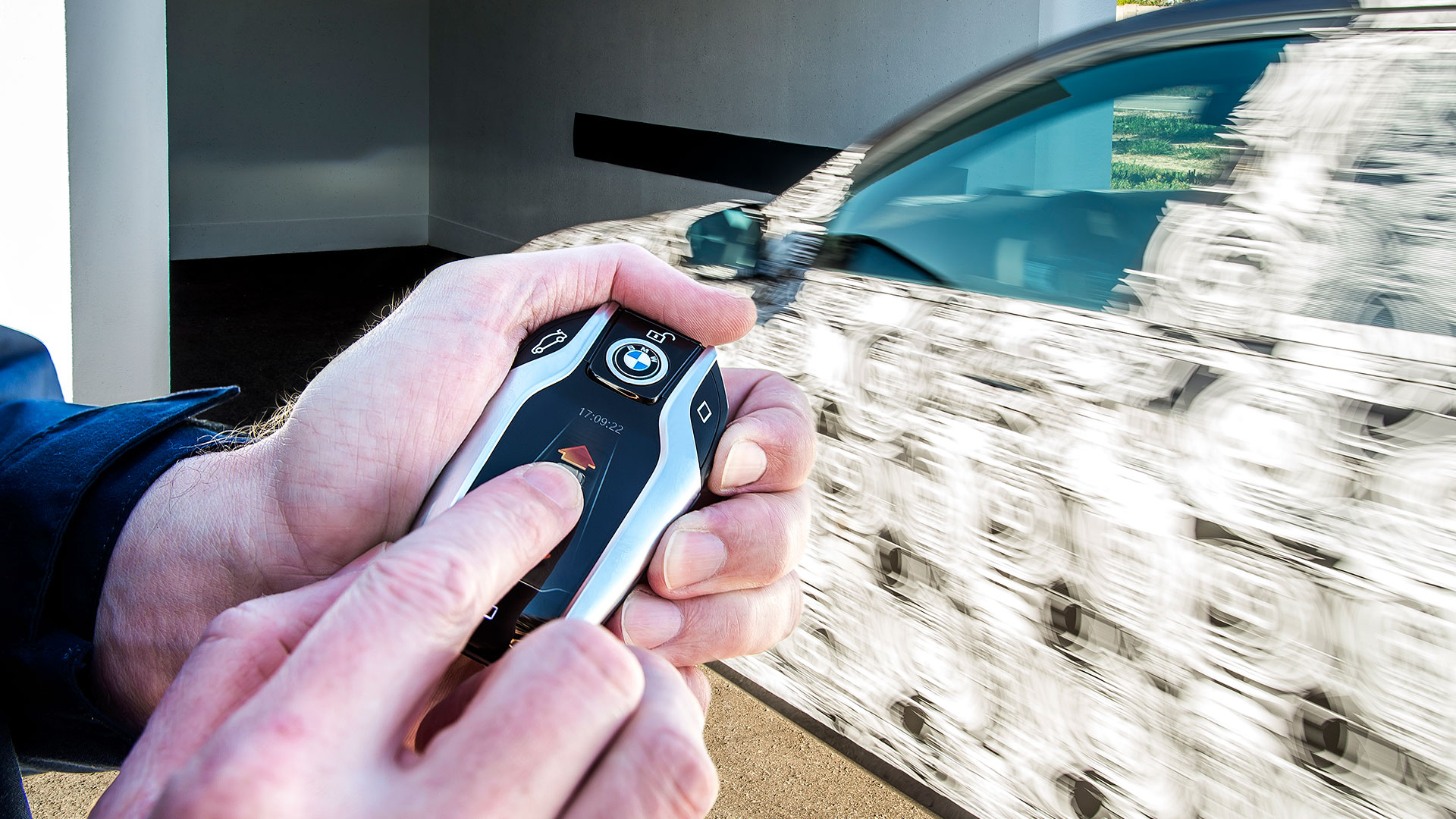

The Europeans are largely unshackled from regulation when it comes to vehicular delights, but many our federal laws won’t allow for new and wild tech. Take, for example, the 2016 BMW 7-Series, which is equipped with Park Assistant Plus. This allows someone to remotely move the car into—and out of—parking spaces using the touchscreen keyfob. Bavarian overlords didn’t plan to bring it to the U.S., though, because 52 words in our Brobdingnagian book of Federal Motor Vehicle Safety Standards (FMVSS) appeared to prohibit it: Section S5.3 of Standard No. 114 stipulates that in any car fitted with an automatic transmission, the gearbox cannot be shifted out of Park without first pressing the brake pedal. Since Park Assistant Plus cuts out the driver, it also cuts out anyone who could press any pedals.
But BMW appealed to the National Highway Traffic Safety Administration for an exemption. And, now, NHTSA granted the use of autonomous parking, along with the concession that the law as currently written is too vague. The agency said it’s the spirit of the rule that matters here, and the intention is to make sure the brakes are applied to avoid a runaway vehicle scenario. Since Remote Park Assist automatically applies the stoppers before shifting, the feature falls within that spiritual spec. BMW says it’s going to get the tech installed on the U.S.-spec 7-Series, but the timeline for implementation is unknown. Beyond BMW, this could mean that a similar, smartphone-controlled system on the new Mercedes-Benz E-Class will also get the nod.
Many of the advanced-yet-benign capabilities worked into luxury flagships right now are taxing the constraints of the FMVSS, so NHTSA will not let them invade our shores. Audi’s Matrix Beam headlights and Mercedes-Benz’s MultiBeam lamps are marquee examples. Both use numerous LED elements feeding off information from cameras and GPS sensors to shape how they throw light down the road. Because the units automatically decide when to use high or low beams, Audi and Mercedes don’t include a driver-controlled toggle, and that makes them illegal; the FMVSS mandates a “means of switching between lower and upper beams” that conforms to one of two recommendations made by the Society of Automotive Engineers.
We take BMW’s exemption as a small, but potent victory. Getting the NHTSA to prune and rewrite the FMVSS so it represents the current automotive landscape, and what’s coming—that would be a real triumph.